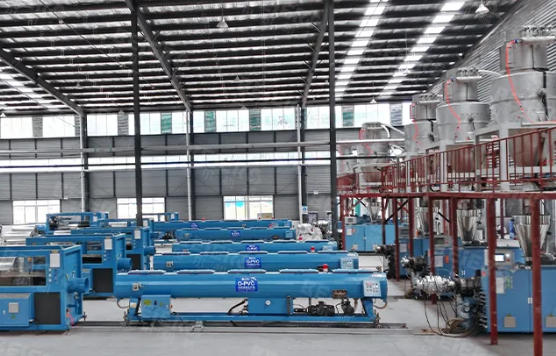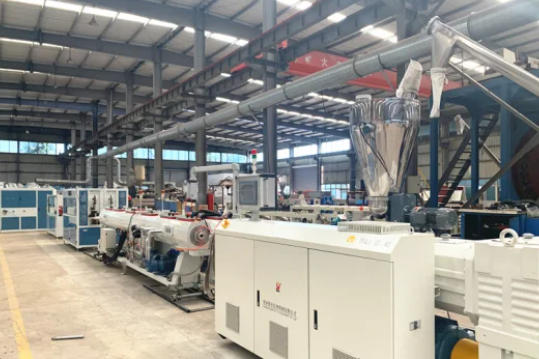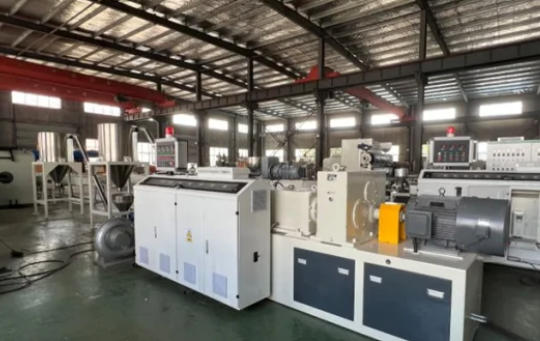Content Menu
● Understanding Automatic Extrusion Lines
>> What Is an Automatic Extrusion Line?
>> Key Benefits of Automation in Extrusion Lines
● Applications of Automated Extrusion Lines
● Profiles of Leading American Manufacturers And Suppliers
>> 1. Unique Extrusions (Connecticut, USA)
>> 2. Bonnell Aluminum (Georgia, USA)
>> 3. Custom Aluminum Products (Illinois, USA)
>> 4. Sierra Aluminum (California, USA)
>> 5. Tower Extrusions (Texas, USA)
>> Additional Noteworthy Suppliers
● The Aluminum Extrusion Process: Step-by-Step
● Choosing the Right Automatic Extrusion Line Supplier
>> Technical and Automation Capabilities
>> Quality Assurance
>> Service and Support
>> Industry Experience and Reputation
>> Cost, Delivery, and Scalability
>> OEM and Customization Options
● Industry Trends Impacting Extrusion Lines
● Maintenance and Life Cycle Considerations for Extrusion Lines
● Sustainability in Extrusion Manufacturing
● Conclusion
● Frequently Asked Questions (FAQs)
>> 1. What distinguishes the best Automatic Extrusion Line Manufacturers And Suppliers in America?
>> 2. Are there differences between American and Chinese OEM extrusion line suppliers?
>> 3. How is automation transforming extrusion lines?
>> 4. What markets utilize automated extrusion lines the most?
>> 5. What should buyers look for when sourcing an automatic extrusion line?
In today's highly competitive manufacturing environment, Automatic Extrusion Line Manufacturers And Suppliers are critical enablers for industries demanding precision, rapid output, and innovation. Particularly in North America, the extrusion industry is witnessing accelerated adoption of automation technologies that improve product consistency, reduce costs, and enhance throughput.
This article delves deeply into the forefront of the American extrusion landscape, profiling top manufacturers and suppliers, exploring the extrusion process, and guiding businesses on selecting the best OEM partner. With a focus on aluminum extrusion—widely used across automotive, aerospace, electronics, and construction sectors—this detailed guide fosters understanding of how modern extrusion lines operate and what sets leading suppliers apart.

Understanding Automatic Extrusion Lines
What Is an Automatic Extrusion Line?
An automatic extrusion line is a sophisticated, highly integrated system that combines several key processes — billet handling, extrusion pressing, cooling/quenching, cutting, straightening, aging, and finishing — into a seamless production workflow with minimal manual intervention. Automation in extrusion lines includes robotics, sensors, programmable logic controllers (PLCs), and computer data feedback systems, which collectively enable highly precise control over product dimensions, mechanical properties, and surface finish.
Key Benefits of Automation in Extrusion Lines
- Enhanced Production Efficiency: Continuous and synchronized operations lead to shorter cycle times and higher throughput.
- Improved Product Consistency: Automated control minimizes human errors, resulting in precise, repeatable product quality.
- Labor Cost Reduction: Reduced need for manual labor lowers operational expenses.
- Real-Time Quality Monitoring: Integration of sensors ensures prompt detection and correction of defects.
- Customization and Flexibility: Modern lines can quickly adjust setups to handle a diversity of alloys and profile designs.
Applications of Automated Extrusion Lines
Automated extrusion lines are indispensable across various industries, where aluminum profiles with complex cross-sections are demanded at scale:
- Architectural Components: Profiles for windows, doors, curtain walls, and facades requiring exact tolerances.
- Automotive: Structural frames, heat exchangers, and lightweight suspension components.
- Electronics and Heat Sinks: Profiles that dissipate heat efficiently, critical for consumer electronics and industrial equipment.
- Solar Industry: Frames and mounting systems for photovoltaic panels.
- Consumer Goods: Frames for appliances, sporting goods, and recreational vehicles.
Each market demands specific alloy compositions and profile intricacies, pushing extrusion lines toward higher automation levels and precision engineering.
Profiles of Leading American Manufacturers And Suppliers
1. Unique Extrusions (Connecticut, USA)
Renowned for precision and diversity, Unique Extrusions offers automated extrusion lines tailored for various alloys (2000 to 7000 series). Their emphasis on ISO 9001:2015 certifiable workflows ensures consistent quality across complex profiles. Unique's four US manufacturing plants exemplify scalable automation, enabling rapid order fulfillment.
2. Bonnell Aluminum (Georgia, USA)
With over $250 million in annual sales, Bonnell aluminum stands as a pioneer. Catering to architectural and transportation sectors, their automated lines emphasize scale, reliability, and energy efficiency. Bonnell has developed a robust North American distribution network, supporting OEMs with timely deliveries.
3. Custom Aluminum Products (Illinois, USA)
Known for full-service OEM solutions, Custom Aluminum Products integrates extrusion with finishing and anodizing lines. Their automated extrusion systems serve customers requiring medium to large batch sizes with tight control over dimensional tolerances and surface treatments.
4. Sierra Aluminum (California, USA)
Sierra's specialty is serving automotive and renewable energy markets with rapid lead times. Their extrusion lines employ advanced robotics for die changing and automated inspection systems, ensuring minimal downtime and maximum accuracy.
5. Tower Extrusions (Texas, USA)
Tower Extrusions focuses on large-diameter profiles (up to 20 inches) and custom alloys. Their vertically integrated approach includes in-house billet casting and finishing—enabled by automation to synchronize processes and maintain quality consistency throughout large-scale orders.
Additional Noteworthy Suppliers
| Company | Location | Specialty |
| Taber Extrusions | Mississippi | Heavy press extrusions with complex alloys |
| Vitex Extrusions | New Hampshire | Precision smaller extrusion lines |
| Whitehall Industries | Michigan | Automotive and medical extrusion profiles |
| BRT Extrusions Inc. | Ohio | Flexible, OEM-tailored extrusion systems |
| Hydro Aluminum Metals | Nationwide | Sustainable, large-scale aluminum extrusion |
The Aluminum Extrusion Process: Step-by-Step
Understanding the extrusion process clarifies why automation is an essential feature of modern manufacturing.
1. Die Loading and Preheat
Extrusion dies are precision molds shaped for the desired profile. They require preheating (over 700°F) to ensure proper aluminum flow during pressing.
2. Billet Preparation
Aluminum billets, typically 6-12 inches in diameter, are cut to length and heated to approximately 900°F to reach a plastic state without melting.
3. Extrusion Pressing
The heated billet is introduced into a hydraulic press. Under pressures exceeding tens of thousands of pounds per square inch, aluminum is forced through the die opening, creating a continuous profile.
4. Quenching and Cooling
The extruded profile exits the die and immediately undergoes rapid cooling—using air or water sprays—to set mechanical properties and reduce grain distortion.
5. Straightening and Cutting
High-precision straightening equipment removes any twisting, then cutting saws trim profiles to exact lengths.
6. Aging and Hardening
Thermal aging in controlled ovens increases the mechanical strength of the aluminum profiles, optimizing hardness and durability.
7. Finishing and Packing
Finishing operations such as anodizing, powder coating, deburring, or polishing happen depending on customer specifications before packaging.

Choosing the Right Automatic Extrusion Line Supplier
When integrating an automatic extrusion line into your production, consider these critical factors:
Technical and Automation Capabilities
- Does the supplier provide fully integrated automation from billet feeding to packing?
- Are robotics and sensors embedded for real-time quality control?
- Can the line handle custom alloys and complex cross-sections?
Quality Assurance
- Are suppliers certified with ISO 9001 or equivalent standards?
- What QA/QC processes (e.g., non-destructive testing, dimensional checks) support the line?
Service and Support
- Does the supplier offer turnkey solutions including installation, training, and ongoing support?
- Is remote diagnostics and troubleshooting available?
Industry Experience and Reputation
- Does the supplier have proven experience in your target industry (e.g., aerospace vs. construction)?
- Can they provide references or case studies demonstrating success?
Cost, Delivery, and Scalability
- Are quotes transparent, covering installation, spare parts, and warranty?
- How flexible are delivery schedules, and are lines scalable if demand grows?
OEM and Customization Options
For businesses willing to partner with cost-effective and highly customizable suppliers, some leading Chinese OEM manufacturers may also be considered. They offer competitive pricing and flexibility but may have longer lead times and require due diligence in quality compliance.
Industry Trends Impacting Extrusion Lines
- Digital Twins and Industry 4.0: Many suppliers are incorporating digital twin simulations and IoT-enabled analytics to preemptively optimize line performance.
- Sustainability Focus: Energy-efficient furnaces, recycled aluminum billets, and waste reduction systems are growing priorities.
- Lightweighting Materials: As automotive and aerospace sectors demand lighter components, extrusion lines are adapting to new alloys and profiles.
- Integrated Finishing: Combining extrusion and finishing on automated lines saves time and enhances product quality.
Maintenance and Life Cycle Considerations for Extrusion Lines
Automatic extrusion lines represent significant capital investment. Effective maintenance strategies are vital:
- Predictive Maintenance: Utilizing sensor data to foresee equipment wear before breakdowns.
- Regular Calibration: Ensuring die and press alignment to maintain profile accuracy.
- Clean and Lubricate: Scheduled cleaning and lubrication prevent downtime and extend equipment life.
- Staff Training: Skilled operators and technicians capable of handling automated systems and software.
Proper maintenance not only maximizes uptime but also protects product quality and line longevity.
Sustainability in Extrusion Manufacturing
As environmental regulations tighten, suppliers are innovating to reduce energy consumption and carbon footprints:
- Use of renewable energy sources in facilities.
- Recycling aluminum scrap back into billets on-site.
- Energy-efficient billet heating using gas or electric furnaces with advanced insulation.
- Minimizing water usage in cooling systems through recirculation.
Choosing suppliers with strong sustainability credentials is increasingly critical for enterprises committed to green manufacturing.
Conclusion
The American market for Automatic Extrusion Line Manufacturers And Suppliers is marked by highly advanced, automated technology tailored to diverse industrial needs. Leaders like Unique Extrusions, Bonnell Aluminum, and Sierra Aluminum set industry standards by combining rigorous quality control with integrated automation across manufacturing processes.
Selecting the proper extrusion line supplier hinges on assessing technical capabilities, certifications, support services, industry experience, and long-term value. Environmental sustainability and Industry 4.0 integration also factor heavily into innovation in extrusion manufacturing.
By understanding these dynamics and the extrusion process itself, manufacturers can confidently invest in the right automatic extrusion line for efficient, high-quality production.

Frequently Asked Questions (FAQs)
1. What distinguishes the best Automatic Extrusion Line Manufacturers And Suppliers in America?
The top suppliers demonstrate significant investment in automation, hold internationally recognized quality certifications such as ISO 9001, and offer tailored solutions addressing custom alloys and complex profiles. Their extensive experience in key industries and after-sales support are also critical differentiators.
2. Are there differences between American and Chinese OEM extrusion line suppliers?
Yes. American suppliers generally provide turnkey solutions with advanced automation, comprehensive certification, and rigorous quality systems. Chinese OEMs tend to focus on cost competitiveness and flexibility but might require rigorous vetting to ensure compliance and quality consistency.
3. How is automation transforming extrusion lines?
Automation reduces manual errors, accelerates production throughput, improves product consistency, and allows for real-time process monitoring—ultimately reducing operational costs and increasing competitiveness.
4. What markets utilize automated extrusion lines the most?
Automotive, aerospace, construction, electronics, and renewable energy sectors are the largest adopters, driven by robust demand for complex and lightweight aluminum profiles.
5. What should buyers look for when sourcing an automatic extrusion line?
Buyers should prioritize suppliers with proven automation expertise, strong quality certifications, comprehensive service packages, industry-specific experience, and transparent pricing. Sustainability initiatives and technology upgrades also improve long-term partnership value.













